CREW Conference 2024 Reflective
Written by Carson on . Posted in Uncategorized.
CREW Network is a national organization that empowers women in commercial real estate through extensive networking, industry research, leadership development, and career outreach initiatives. Several years ago, CREW Network launched market-specific councils to provide enhanced networking and learning opportunities tailored to various sectors. In 2022, I had the privilege of joining the inaugural Affordable Housing Council. The council convenes twice annually, fostering collaboration and knowledge exchange among members.
Our most recent gathering occurred in the vibrant Dallas, Texas, this past April. Nestled in the heart of downtown Dallas, the historic Adolphus Hotel served as the venue for our conference. Its blend of timeless architectural charm and contemporary amenities provided an inspiring backdrop for our diverse group of professionals. Over two days, attendees immersed themselves in a rich tapestry of networking sessions, guided tours, insightful speakers, and focused council meetings.
Thursday evening set the tone for the event with an energetic all-council opening reception. Amidst the lively atmosphere, attendees shared anecdotes, forged new connections, and rekindled old friendships. As we dined at the local Italian eatery, Campisi’s, the air buzzed with excitement and anticipation for the days ahead. It was a testament to CREW Network gatherings’ collective energy and passion.
The following day commenced with a robust programming lineup, starting bright and early with a 7 am breakfast followed by a compelling keynote address. Christine Cooper, Chief US Economist and managing director for CoStar Group, delivered an incisive analysis of the current economic landscape, focusing on trends impacting the real estate sector. Amidst projections of continued consumer spending growth and labor market dynamics, Cooper highlighted nuanced insights into the evolving nature of inflation and its implications for various asset classes.
In the realm of real estate, Cooper’s analysis underscored both challenges and opportunities. Office vacancies continued to rise, juxtaposed against declining rents—a trend mirrored in the industrial market. However, amidst these headwinds, adaptive reuse emerged as a beacon of innovation, breathing new life into underutilized spaces, and bolstering affordable housing initiatives. The intersection of economic forces and societal needs set the stage for a dynamic exchange of ideas throughout the conference.
Following the keynote address, our council convened for engaging sessions featuring industry experts and thought leaders. Spencer Marks, COO of Arthoto, took the stage to share insights into innovative housing solutions leveraging modular construction and 3D printing technologies. His presentation sparked conversations around the potential for disruptive innovation to address housing affordability challenges, igniting a sense of optimism among attendees.
A highlight of the day was a thought-provoking dialogue with Elizabeth Beck, a Fort Worth city council member. Beck offered firsthand perspectives on the opportunities and obstacles in affordable housing initiatives, shedding light on the complexities of navigating local governance and community dynamics. Her candid reflections resonated with many attendees, inspiring renewed commitment to driving tangible change in their communities.
This year, our council welcomed eight new members, enriching our collective expertise across diverse disciplines, including construction, civil engineering, insurance, and conversion. The influx of fresh perspectives invigorated our discussions, fueling lively debates and stimulating new avenues for collaboration. From exploring emerging trends in insurance coverage for multi-family housing to legislative advocacy efforts, our agenda was brimming with substantive topics to advance our shared mission of promoting affordable housing solutions.
As we chart a course for the year ahead, I am energized by the prospect of delving deeper into innovations, policy frameworks, and personal narratives that will inform our collective efforts to address the pressing challenges in affordable housing. From presenting initiatives like CPACE (Commercial Property Assessed Clean Energy) financing to facilitating knowledge-sharing on green infrastructure, I am committed to leveraging my expertise to drive meaningful impact within our council and beyond.
In closing, the Dallas conference was a powerful reminder of the transformative potential inherent in collaborative endeavors. As we navigate the complexities of the real estate landscape, let us draw inspiration from our shared vision and collective resolve to build a more equitable and inclusive future for all.
“America the Beautiful”-A New Aesthetic for the Western Landscape
Written by Carson on . Posted in Uncategorized.
In 1893, Katharine Lee Bates, a professor at Wellesley College in Massachusetts, went to Colorado Springs to teach a summer class about Chaucer. Her cross-country travels took her through the heartland in the Midwest and the World’s Columbian Exposition in Chicago. The exploration didn’t stop once she arrived in Colorado. Bates took a wagon more than 14,000 feet up to nearby Pikes Peak. At the summit, she found the inspiration to write her famed poem, America the Beautiful:
“O beautiful for spacious skies,
For amber waves of grain,
For purple mountain majesties
Above the fruited plain!”
What Katharine did not see from the top of Pikes Peak was the broad manicured lawns that are ubiquitous in Colorado today. How did we get from “amber waves of grain” to endless fields of water-hungry, non-native grasses that are out of place in the Front Range?
Here in Colorado and the rest of the arid West, we need to let go of outdated notions of what the ideal landscape looks like. It’s time to embrace a new aesthetic for the Western landscape that reflects Bates’ iconic introduction, embraces the indigenous beauty of the West, and preserves water for future generations.
We can thank the British for giving the world the lawn. The style that became known as the English garden was invented by landscape designers that were working for wealthy patrons on large estates. It usually included a lake and sweeps of gently rolling lawns set against groves of trees designed to recreate an idyllic pastoral landscape. Today, in most cities around the world, 50-70% of public green space is mown grass.
Tree lawns became prominent in Colorado when Denver Mayor Robert Speer introduced the City Beautiful movement in 1904. City Beautiful ideas had grown from the 1893 World’s Fair in Chicago and extolled the virtues of uplifting communities through public architecture and expansive parks. Speer was determined to transform Denver from a dusty western city to a “Paris on the Platte.” The resulting parks, tree-lined boulevards, public buildings, and monuments, which still comprise much of the city’s urban landscape today, are widely considered among the best examples of the City Beautiful movement in the United States.
Unfortunately, the movement embedded an aesthetic in the American consciousness built around appearances alone. There was little thought about landscape and the urban forest as a critical component of urban infrastructure, environment, and sustainability.
Less than a month ago, Governor Polis signed Senate Bill 24-005 into law, effectively initiating a new era for the landscape of Colorado. This new legislation outlaws the use of nonfunctional turf on certain construction projects in the state. No longer can we expect a landscape from a bygone era, transplanted from an environment a thousand miles or more away. The age-old design adage that “form follows function” needs to drive the look of the new Western landscape.
Not everything about the influence of the English Garden style and the subsequent City Beautiful movement has been detrimental to Colorado. Adding trees to the urban environment is good; however, we need trees for more than their aesthetic benefit. We need them to shade us, provide critical animal habitats, improve the quality of the air we breathe and the water we drink. We need broad open spaces within the urban condition to reduce the visual impact of density, create wildlife corridors/habitats, and, more importantly, have places for recreation and free public assembly, a hallmark of our great experiment in democracy.
“New Urban” design doesn’t mean “pave it.” A truly “new urban” landscape should be focused on reducing impervious surfaces and not being compelled to cover the landscape with pavement from the center of the street to the building façade. This “old urban” approach overheats our cities, accelerates run-off and evaporation, degrades water quality, and kills trees.
By planting trees in suffocating tree grates and providing little intervention or care, cities are planting trees destined to die simply to meet code requirements that lack long-term vision. In a healthy urban ecosystem, the ability of trees to thrive is contingent on human intervention because they are an essential part of urban infrastructure. Urban trees and landscapes are among the most powerful tools designers can use to help communities mitigate and adapt to climate change. Trees are like outdoor swamp coolers that operate as carbon sinks. The ecosystem services provided to us by the urban forest are wide and varied. The cooling impact of a single healthy tree from evaporation and absorbing sunlight “is equivalent to ten room-size air conditioners operating 24 hours a day,” according to the US Department of Agriculture.
Many of our European neighbors from across the pond are already practicing some great ideas that we can emulate here in the States:
In the Netherlands, a national “tile whipping” competition has the goal of helping reach environmental targets by removing garden paving. ‘Tegelwippen’ is a lighthearted competition where municipalities compete to eliminate the most paved infrastructure.
In Scotland, human deforestation has reduced their wild pine forests by 98% since the last ice age. Today, the “Rewilding” of Scotland is underway on multiple fronts as they seek to restore the indigenous landscape. They have committed 30% of public land to rewilding by 2030, reintroducing keystone species, reducing non-natural landscapes, and allowing indigenous ecosystems to recover.
Many other countries are making similar progress as well. These examples should instill confidence in Coloradoans. We can create a new western landscape that is functional and regenerative. One that protects our most vital resources, air and water, all while reintegrating the natural beauty and environmental benefit of the indigenous landscape into the urban condition. We must re-wire our brains to see our environment as Katharine Lee Bates once did from the top of Pikes Peak. It’s time to embrace the Western landscape she engrained in our national identity so long ago.
IBS 2024 Retrospective
Written by Carson on . Posted in Uncategorized.
I’m back from the International Builders Show (IBS) 2024 in Las Vegas once again. It was warm and sunny, much better than the past few years. Here’s a brief follow-up on some hot topic items on the Environmental Issues (EIC) and Land Development Committees (LDC) I serve on.
An updated Wetlands Resolution was presented to both committees by sponsor Vince Messerly, EIC member and President of the Stream and Wetland Foundation, Lancaster, Ohio. I was a task group member assisting in drafting the resolution. This new resolution directly responds to the recent Supreme Court of the United States (SCOTUS) ruling that redefines Waters of the US (WOTUS) per the Clean Water Act, a topic of great importance to our committees.
Our committees have been actively involved in other recent actions regarding the revised WOTUS rule, including:
• The EPA/Corps of Engineers hosted listening sessions for industry stakeholders.
• The Corps proposed new regulations for reviewing historic/cultural resources during the Clean Water Act 404 wetland permitting process.
• House Republicans introduced a series of CWA permitting reform bills.
Our discussions on impact fees, an issue of high importance to the Land Development Committee, have been fruitful. Tom Ward, with the National Association of Home Builders (NAHB) staff, presented to the Committee a litigation known as Sheetz v. County of El Dorado. This litigation is in response to a traffic impact fee imposed upon a property owner, highlighting the relevance of our ongoing discussions. As a part of the permit process, the County imposed a traffic impact fee of $23,000 for the single unit! Hence the litigation.
Something to consider. Houses don’t impact traffic – motor vehicles do. Perhaps the impact fee should be on the motor vehicles – not homes.
Call me if you want to learn more about these and other issues that may affect your work and how you might participate in our committee work.
Your Grass May Be Illegal Soon (and Why That’s a Good Thing): A Review of Bill 24-005
Written by Carson on . Posted in Uncategorized.
Yes, you read that right. On March 15th 2024, Governor Polis signed Bill 24-005 into law. This new legislation outlaws the installation of nonfunctional turf, artificial turf, and invasive plant species on many new construction projects across the state, effective on and after January 1, 2026.
Who will Bill 6 affect?
First, let’s make something 100% clear – this bill does not apply to previously installed landscapes. However, this bill does affect you if you are:
- A homeowner’s association (HOA, UOA, POA, etc.) looking to re-landscape common areas.
- A builder looking to build new HOA, UOA, or POA-controlled properties.
- A builder who intends to work on state-owned property construction.
If you’re interested in learning more, click this link to read Bill 24-005 in its entirety.
Why does Bill 6 matter?
Bill 6 matters because:
- Too much of Colorado’s scarce water supply is being used on entirely ornamental, nonnative turf grass.
- Artificial turf contains synthetic materials that can leak harmful chemicals into the environment and watersheds. Additionally, it has a much hotter surface temperature than living grasses, contributing to the heat island effect.
- Invasive plant species can have harmful effects on the state’s environment and economy.
If you live in Colorado and hope to keep it beautiful – and hope to keep water accessible and affordable – you should keep reading. This bill is a crucial measure in the broader effort to curb climate change, conserve water, and mitigate Colorado’s growing heat island effect.
What will Bill 6 change?
No More Nonfunctional Turf
Bill 6 defines nonfunctional turf as turf that is “located in areas that receive little, if any, use, and could be replaced with water-wise landscaping without adversely impacting quality of life or landscape functionality.” This does not include turf that is in a sports field or playground.
However, not all grass is bad grass. The Front Range sits atop the highest elevations of the short grass prairie. As the name implies, Blue Grama (the state grass), Buffalo Grass, and other grasses short in stature dominate the landscape, and are excellent native turf options.
Here are five water-wise turf options that we recommend:
1. Turf Master EnviroTurf™

(Image Caption: Larry Levin Park at RidgeGate Station | Lone Tree)
Turf Master EnviroTurf™ sod is a mix of fescues and other drought tolerant species used in high traffic park spaces. Additionally, it, along with Nature’s Prairie Sod (see below) both need 40% less water than traditional Kentucky Bluegrass.
2. Turf Master Nature’s Prairie Sod

(Image Caption: Turf Master Prairie Sod Farm | Fort Collins)
Turf Master’s Nature’s Prairie Sod is a blend of indigenous and naturalized grasses used in tree lawns and other moderate traffic areas.
3. Buffalo Grass/Blue Grama Seed Mix

(Image Caption: Blue Grama at Denver Zoo Main Entrance | Denver)
A Buffalo Grass/Blue Grama seed mix has a very low water demand used for medians, right of way (ROW), and natural areas where a more uniform natural look is desired.
4. Low Grow Native Seed Mix

(Image Caption: Leyden Rock | Arvada)
A “low grow” native seed mix is used for disturbed areas on edges of development.
5. Non-Native Naturalizing Grasses

(Image Caption: Blue Lyme Grass and Ribbon Grass at Stanley Marketplace | Aurora)
Turf doesn’t always need to be native to be sustainable. Non-native grasses should be drought-tolerant, aggressive growing, and durable to wear-and-tear by humans and pets.
Sustainability doesn’t need to come at the cost of profitability. Check out this recent case-study that details how one of our projects reduced water costs by 43% by utilizing water-wise landscaping.
No More Artificial Turf
Bill 6 defines artificial turf as “an installation of synthetic materials developed to resemble natural grass.” As stated above, artificial turf can leech chemical pollutants as it degrades from use and sunlight, and it absorbs more heat, contributing to the heat island effect.
For a more sustainable alternative, we recommend utilizing one of the turf solutions mentioned above.
No More Invasive Plant Species
According to the Colorado Revised Statute 37-60-135 (2)(e), Invasive plant species are nonnative plants that 1) are introduced accidentally or intentionally, 2) have no natural competition or predators, and 3) have harmful effects on the state’s environment or economy or both.
For more information on invasive species, we encourage you to visit the Colorado Department of Agriculture’s list of noxious species.
In Conclusion
If you’re a builder in the front range, Bill 24-005 is not a threat to your business. Keeping water accessible and affordable is key to keeping new home development moving forward. Additionally, there are readily available, cost-effective, and sustainable landscaping practices that can serve your customers well while preserving Colorado’s rich, natural beauty.
If you’re still concerned about Bill 6, or if you’re interested in improving sustainability without sacrificing profitability, Consilium Design is offering a free consultation and design audit to Colorado Builder subscribers from now until June 1st, 2024.
Quebec Run featured in Case Study on Water-Wise Landscaping
Written by Carson on . Posted in Uncategorized.
Quebec Run featured in Case Study on Water-Wise Landscaping
Consilium Design is proud to see Quebec Run, one of our projects, featured in the recent case study titled “Water Wise Landscapes: A Cost-Effective HOA Investment in Resilience.” Thank you to the Waternow Alliance and the Western Resource Advocates for their work in this excellent study.
Consilium Design was able to help the HOA at Quebec Run reduce their water bill by 43% by converting water-hungry Kentucky Blue Grass to native grasses. If you’re interested in seeing similar results, Consilium Design is offering a free sustainability consultation from now until June 1st, 2024.
Free Consultation
Schedule your free consultation to learn how you can improve sustainability without sacrificing profitability today.
Technology Cannot Replace Trees: A Response to Bill Gates
Written by Carson on . Posted in Uncategorized.
At the New York Times Climate Forward Summit, Bill Gates said that planting trees to solve the climate crisis is “complete nonsense.” He proposed instead that we invest in companies like Climeworks, whose scrubber technologies capture carbon dioxide directly from the air.
Solving the climate crisis goes beyond simply removing carbon dioxide from the atmosphere; it’s also about preserving and restoring functional ecosystems, and trees play a critical role in many of them. We’ve lost 35% of forests in the past 300 years. The United Nations Environment Program quantified the Earth’s Forest area following the last ice age, and they estimate that the global number of trees has fallen by about 46% since the start of modern human civilization.
Trees and forests provide human communities with what we call Ecosystem Services. In addition to producing fiber, oxygen, and food, forests act as carbon sinks that absorb and hold onto carbon emissions.
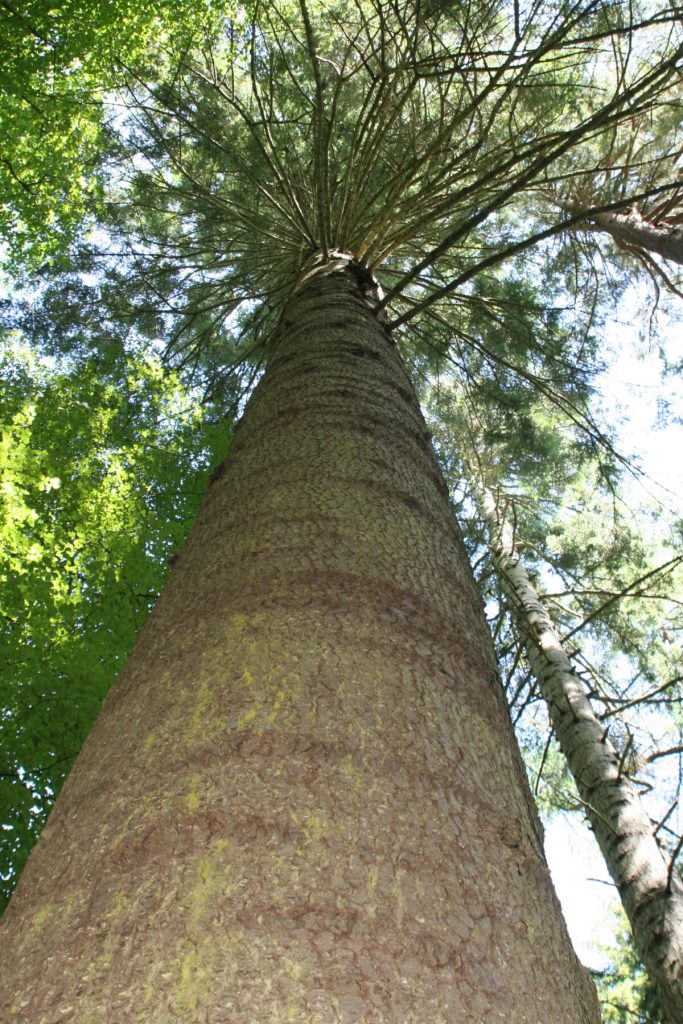
The Ecosystem Services provided to us by trees and forests are wide and varied:
- Forests provide us with food like nuts and fruits and are home to many game species humans hunt for sustenance.
- They shade and cool our homes and cities, mitigating the impact of the urban heat island effect. Transpiration from trees further cools the atmosphere like giant swamp coolers.
- Trees stabilize soil and hold onto large amounts of water. With large-scale weather events becoming increasingly common, the ability of our landscapes to withstand these events is increasingly important.
- In addition to preventing soil loss in rain events, trees slow stormwater run-off and the potential for flooding and support stormwater infiltration, recharging groundwater.
- Trees provide critical habitat and promote biodiversity in both natural and urban ecosystems.
- Forests and other nonagricultural lands absorb a net of 13% of U.S. carbon dioxide emissions, reducing the greenhouse effect and, in turn, releasing oxygen.
- Trees help to make our streets safer by changing the scale of the road, influencing driver perception, and slowing them down.
- Stress relief researchers have found that certain natural scenes are visually appealing and stress-relieving. Exposure to natural patterns and fractals created by trees can reduce stress by up to 60%.
- People have a sense of history and tie to culture and community in old trees. Mature trees instill a sense of establishment and security, are stately, and have withstood the test of time, often for generations. The Banyon tree in Lahaina is an excellent example.
Technology is only part of the solution.
Climate Change didn’t happen overnight, and it won’t be solved overnight or even in the next 20 years. While scrubber technologies like Climeworks are encouraging, they only solve a narrow portion if the problem. It will take more than purchasing a carbon offset plan to reverse climate change. Also, is it just me, or does the idea of industry owning and controlling clean air sound a bit foreboding? Does this solve the problem? Or are we just handing the climate over to industrialists and billionaires? It may sound enticing to try and pay our way to a healthy planet, but there’s no way around it – technology is only PART of the solution – we still need to do the work. Think of scrubbers like a ventilator in an I.C.U. They may keep the patient alive, but they don’t make that patient healthy again.
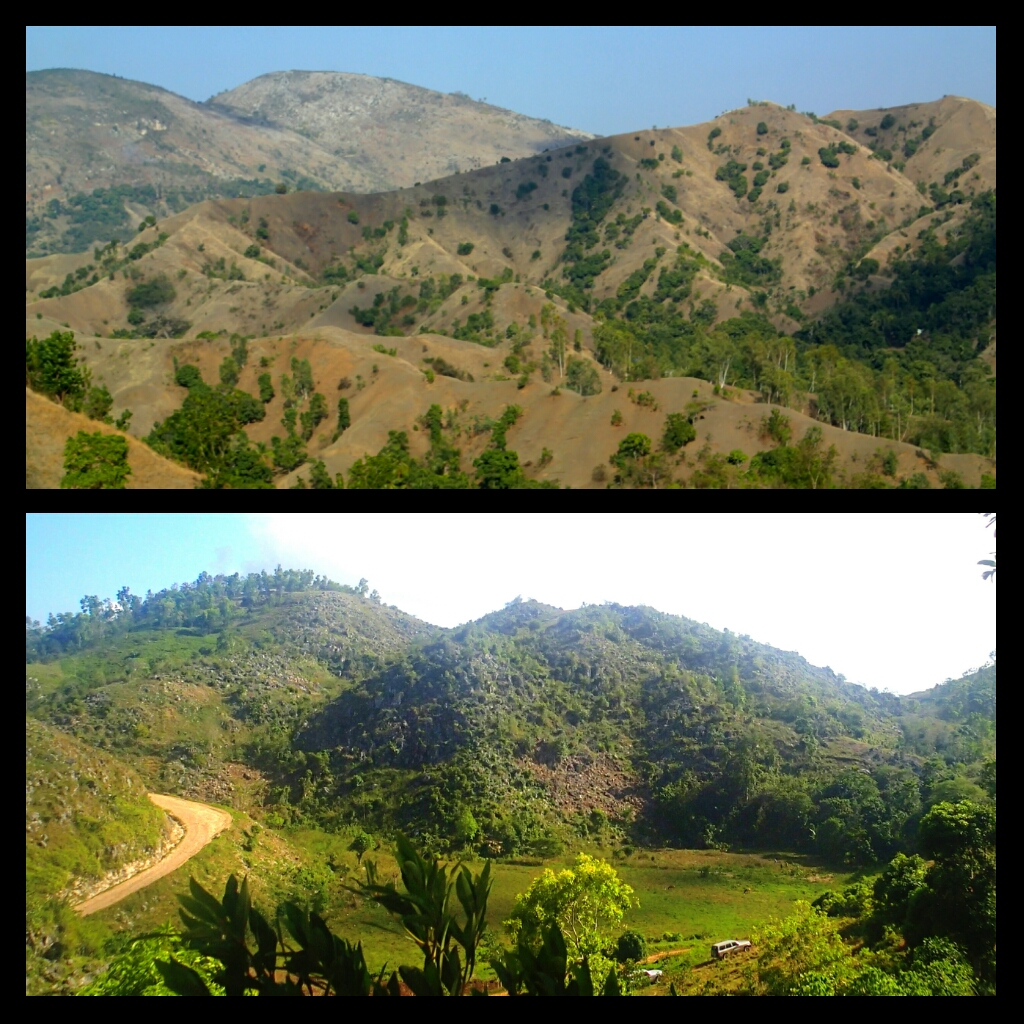
What CAN we do?
An effective and socially sustainable long-term solution for humanity must come from the range of diverse communities of society, not the 1% alone. We have the potential power of 7.8 billion humans to regenerate life-sustaining ecosystems around the globe and solve the climate problem. One person in rural Indonesia will likely never have the resources to build and operate a scrubber perpetually. However, they can plant trees and rebuild ecosystems within their community in their lifetime. Those local communities also carry generations of valuable knowledge and understanding of their ecosystems and how to support the generation of ecosystem services best. Between 2000 and 2020, the amount of forest increased by 1.3 million square kilometers, an area larger than Peru, according to the World Resources Institute, with China and India leading the way. While those trees won’t sequester much carbon in the first five years, they will over their lifetime. Healthy forests are regenerative. They replace themselves in perpetuity. What’s the lifespan of a scrubber?
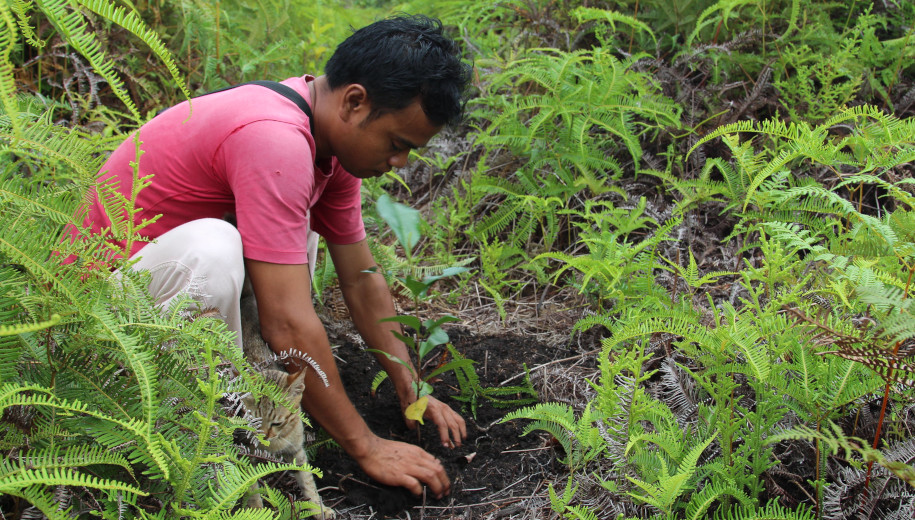
The best practice for our involvement as community builders in reforestation and urban forest development means involving local people from the beginning to the planning stage and on through to the delivery and management of the forest, be it a natural condition or the forest within their own neighborhood. It is local communities that will often look after the forest, prepare the land, plant the trees, and maintain the site, all of which diversify local employment and improve livelihoods. Prioritizing reforestation and management of forests, both in rural and urban settings, is crucial for the longevity of our communities and planet. We must think and plan in the scope of decades and centuries, not the latest news cycle.
Why I Plant Trees I Will Never See Grown
Written by Carson on . Posted in Uncategorized.
“A society grows great when old men plant trees whose shade they know they shall never sit in.”
When an old person plants a tree they know well that they will likely not live to see the plant grow up to bear fruits or enjoy its shade, still, they do it so that future generations will benefit from it.
Trees are a key component of any sustainable and resilient community.
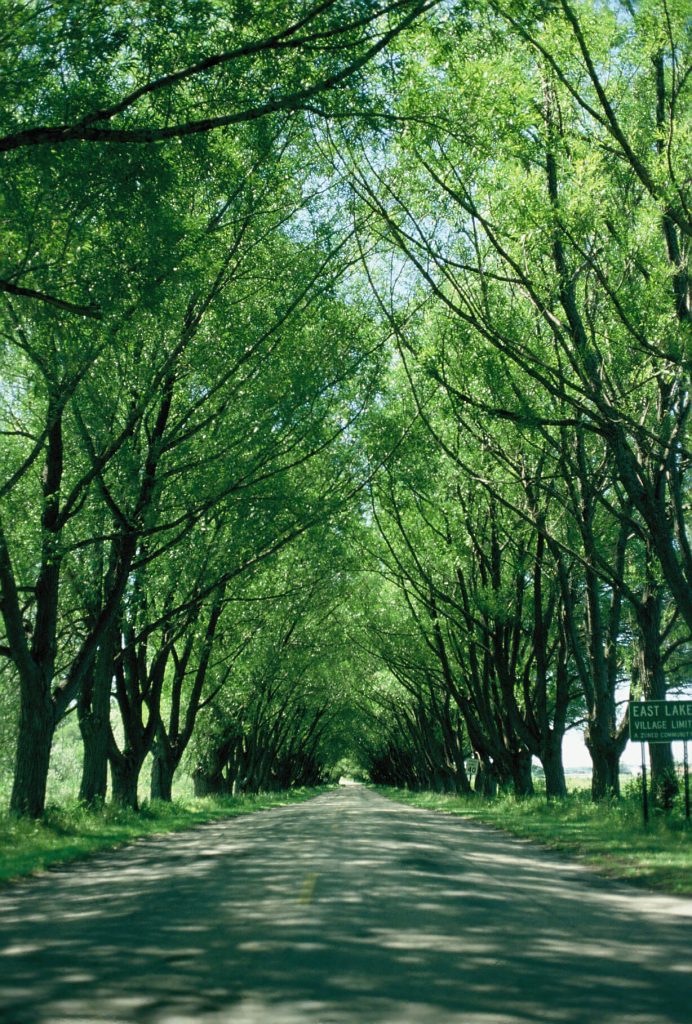
They provide us with many practical benefits like:
- Food, like nuts and fruits
- Shade to cool our homes and cities, mitigating the impact of the urban heat island effect. Transpiration from trees further cools the atmosphere like giant swamp coolers.
- Trees make our streets safer by changing the scale of the street, influencing driver perception, and slowing them down.
- Trees hold lots of water in a rain event, slowing stormwater run-off and the potential for flooding.
- Forests and other nonagricultural lands absorb a net of 13 percent of U.S. carbon dioxide emissions.
- Trees sequester carbon from the atmosphere, reducing the greenhouse effect, all while releasing oxygen.
- Stress relief-researchers have found that certain works of art or natural scenes are visually appealing and stress-relieving – and one crucial factor is the presence of the repetitive patterns called fractals. Exposure to natural patterns & fractals like trees can reduce stress by up to 60%.
- People have a sense of history in old trees. Mature trees instill a sense of establishment and security. They are stately and have withstood the test of time, often for generations. The Banyon tree in Lahaina is an excellent example.
The average lifespan of a newly constructed house is 70–100 years, assuming exceptional maintenance. The lifespan of trees can be as much as 300 years or more, depending on the species. The growing conditions we provide for them will dramatically impact lifespan. Given the right conditions to thrive, trees can outlive many of our homes by generations, providing all the benefits listed above for decades and even centuries.
Trees should be considered a critical part of future urban infrastructure development and the design of our cities, towns, and neighborhoods. They cannot be an optional item, planted when all other needs, real or perceived, are met.
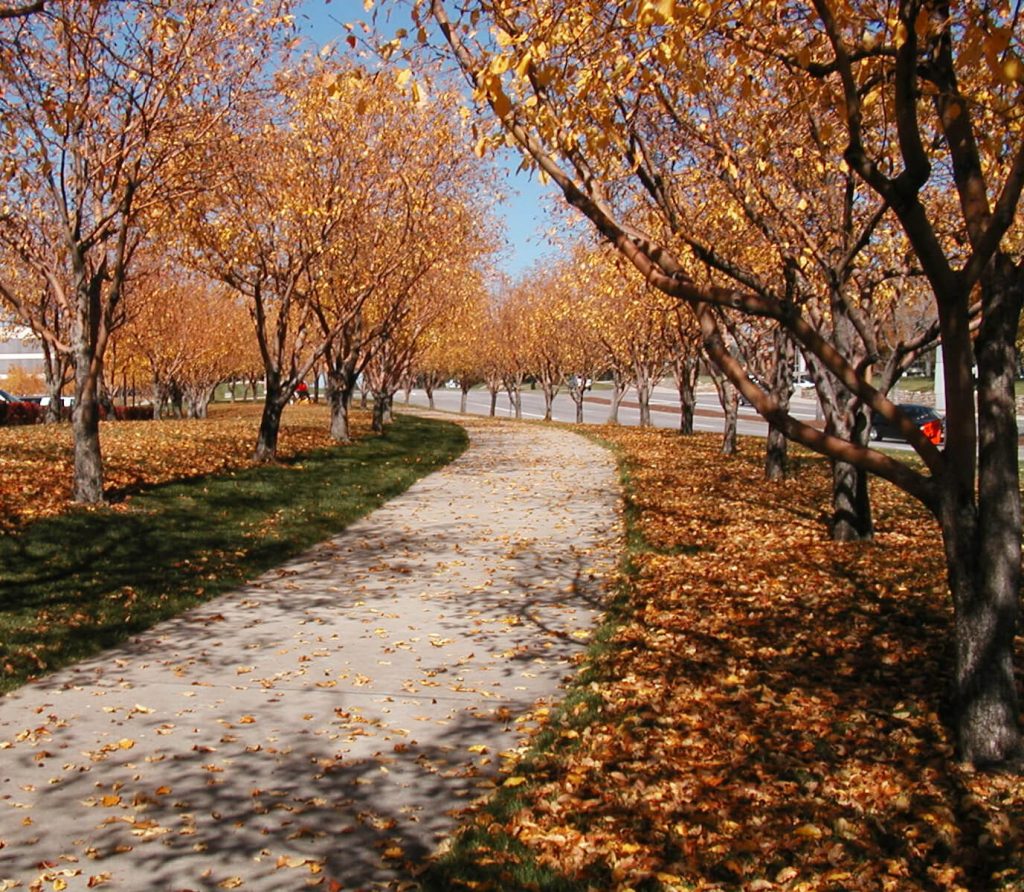
Those of us who work in community development or “city building”, as we often refer to it at Consilium
Design, understand that the noted Greek proverb applies to much more than the planting of trees. The work we do to create great places for living should focus on more than a flashy branding campaign to get the sale of a new home to the first homeowner. It should be focused on how we build places that will be “home” for generations to come.
When we advocate through our designs for narrower streets, it’s not just to save our client money. It’s to reduce the amount of impervious asphalt and concrete we introduce into the environment, the pollution created by its manufacture, and the expense of perpetual maintenance. It’s because narrower streets are safer streets. It’ because land not used for streets can be land for homes, open space, and biodiversity within the community.
When we design and advocate for higher density, It is not just for the bottom line. It is to give people more opportunities to be less automobile-dependent and have better access to transit and other community resources. It is to make housing more attainable and closer to employment.
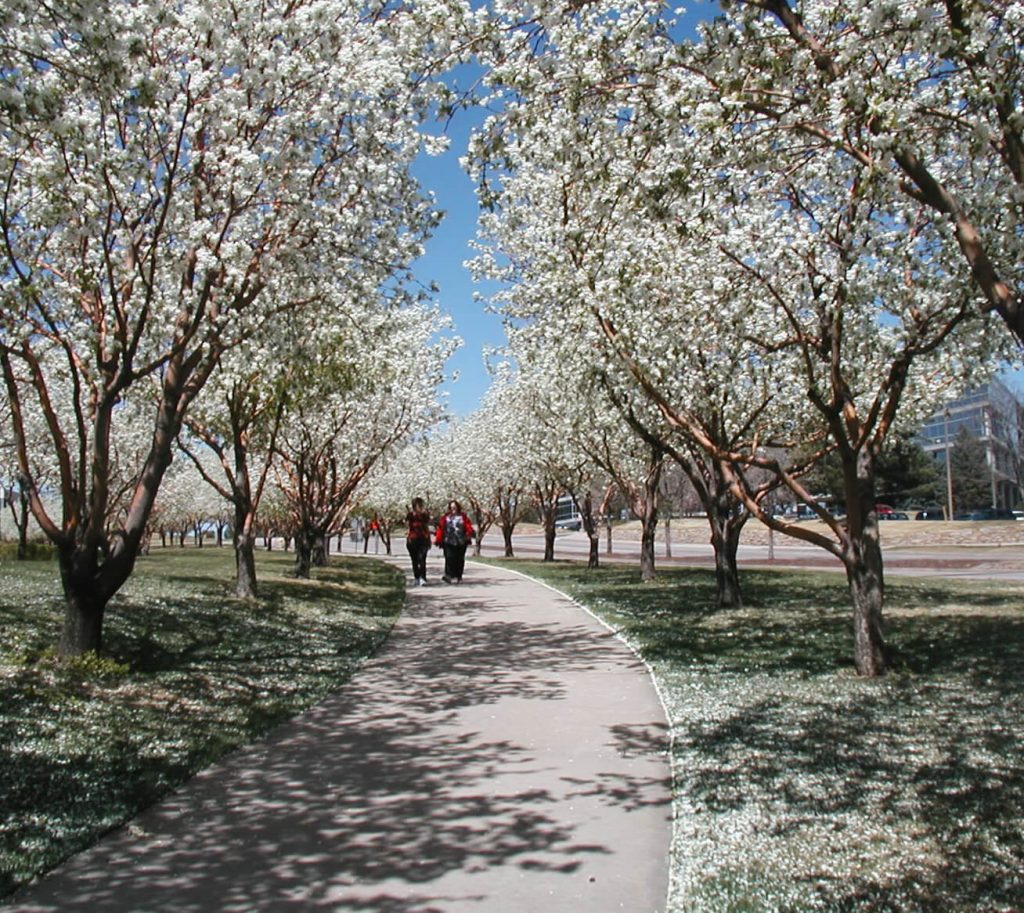
When we integrate public spaces as the focus of our designs, we advocate for a fundamental right of a free society- freedom of movement and public assembly, in all its forms.
We are creating a backdrop for the growth of healthy and free communities.
As “city builders”, we will never live in most of the places we create, but the “trees we plant” both literally and figuratively, will provide shelter and shade for our children and many future generations.
Vermillion Creek Development Plan Receives Unanimous Approval
Written by amsdenver on . Posted in Uncategorized.
On Monday, April 17th, the Centennial Colorado City Council unanimously approved a Preliminary Development Plan Amendment and Phase One Site Plan for Vermillion Creek. The 94-acre property abutting Cherry Creek, West of Parker Road and South of Broncos Parkway, will have up to 675 residences and 50,000 square feet of neighborhood-serving commercial development. The community will provide for diverse housing choices and architectural styles with four different home types, including townhomes, clustered single-family homes on motor courts, compact single-family homes, and traditional single-family homes. A fifth home type may be included within a planned mixed-use neighborhood commercial parcel. The concurrently approved phase one Site Plan consists of 282 residences and three home types.
Open space and pedestrian connectivity to the Cherry Creek open space is a key component of the master plan, with an interconnected system of streets and open space corridors carefully integrated into the design. Several park spaces are included, from small pocket parks to larger park spaces with turf play, play areas for varying age groups, and shelters for group gatherings.
Consilium Design is pleased to be given the opportunity to lead the design team through the entitlement process with Dewberry Engineering (civil) and LSC Engineering (transportation). Jason Monforton of Totum Management, LLC skillfully guided the team as the client representative through the entire design and entitlement process.
The History of Arbor Day
Written by amsdenver on . Posted in Uncategorized.
Arbor Day for the year 2023 is celebrated/ observed on Friday, April 28th.
Arbor Day is observed in spring in the United States but globally dates vary depending on the region’s climate and planting season. It is a holiday to encourage people to plant and care for trees.
Arbor Day and the World
Close to around 50 countries around the world celebrate Arbor Day with the holiday celebrated during tree planting season (spring) depending on where the country is located geographically, and how the weather is in the Northern or Southern Hemisphere.
The origins of Arbor Day date back to the early 1870s in Nebraska City. A journalist by the name of Julius Sterling Morton moved to the state with his wife, Caroline, in 1854, a little more than 10 years before Nebraska gained its statehood in 1867. The couple purchased 160 acres in Nebraska City and planted a wide variety of trees and shrubs in what was primarily a flat stretch of the desolate plain.
Morton also became the editor of the state’s first newspaper, Nebraska City News, which was a perfect platform for Morton to spread his knowledge of trees… and to stress their ecological importance to Nebraska. His message about tree life resonated with his readers, many of whom recognized the lack of forestation in their community. Morton also became involved with the Nebraska Board of Agriculture.
On January 7, 1872, Morton proposed a day that would encourage all Nebraskans to plant trees in their community. The agriculture board agreed, and after some back-and-forth about the title—the event was originally going to be called “Sylvan Day” in reference to forest trees—Morton convinced everyone that the day should reflect the appreciation of all trees, and “Arbor Day” was born.
The First Arbor Day
With the seeds of interest already planted in the minds of devoted Nebraska City News readers, the first ever Arbor Day was held on April 10, 1872, and was a wild success. Morton led the charge in the planting of approximately 1 million trees. Enthusiasm and engagement were aided by the prizes awarded to those who planted trees correctly.
The tradition quickly began to spread. In 1882, schools across the country started to participate, and more than a decade after its introduction, Arbor Day became an official state holiday in Nebraska in 1885. April 22 was initially chosen because of its ideal weather for planting trees and in recognition of Morton’s birthday.
Arbor Day Becomes A National Holiday
It wasn’t until 1970, however, that Arbor Day became recognized nationwide thanks to the efforts of President Richard Nixon. This move was in line with other environmentally friendly actions taken by Nixon in the 1970s, including the passing of the Clean Air Act, the Endangered Species Act, the Clean Water Act, and the National Environmental Protection Act, along with the creation of the Environmental Protection Agency.
Although some states celebrate Arbor Day at different times of the year to ensure that the trees are in the best environment to thrive, the national observance falls on the last Friday in April. And although Julius Morton died in 1902, well before the holiday was given a formal day of observance across the country, he is still commemorated in Washington, D.C. in a statue dedicated to the “Father of Arbor Day” in the National Hall of Fame.
Morton’s words about Arbor Day resonate strongly today, as climate change becomes a growing threat: “Other holidays repose upon the past; Arbor Day proposes for the future.”
Celebration Ideas
- Hold an Arbor Day ceremony and honor the good stewards in your community.
- Organize a Big Tree or Oldest Tree search within your community.
- Plant a tree.
- Host a reception to honor the Tree Board members in your community.
- Write a story, produce a play, or present a skit about trees.
- Choose a public park or downtown area to clean up.
- Read a book about trees.
- Hold an Arbor Day Birthday Party for the community.
- Sponsor a craft show featuring exhibitors who engage in crafts with natural materials.
- Schedule classes on tree pruning, tree selection, tree identification and tree planting.
- Hold a Read-In at the library.
- Host a concert.
- Sponsor a poster contest, poetry contest or tree trivia contest.
- Organize a tree identification hike.
- Volunteer with a local tree-planting organization.
- Encourage neighborhood organizations to hold Arbor Day block parties.









